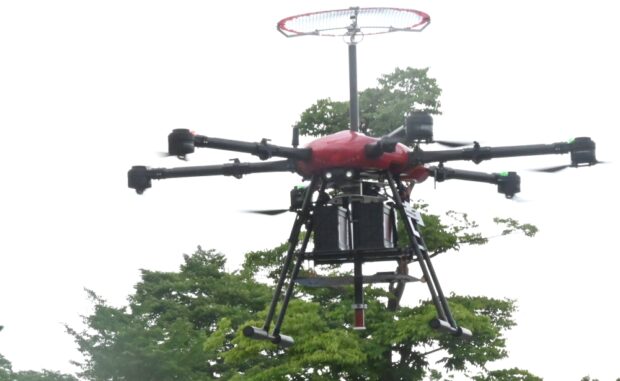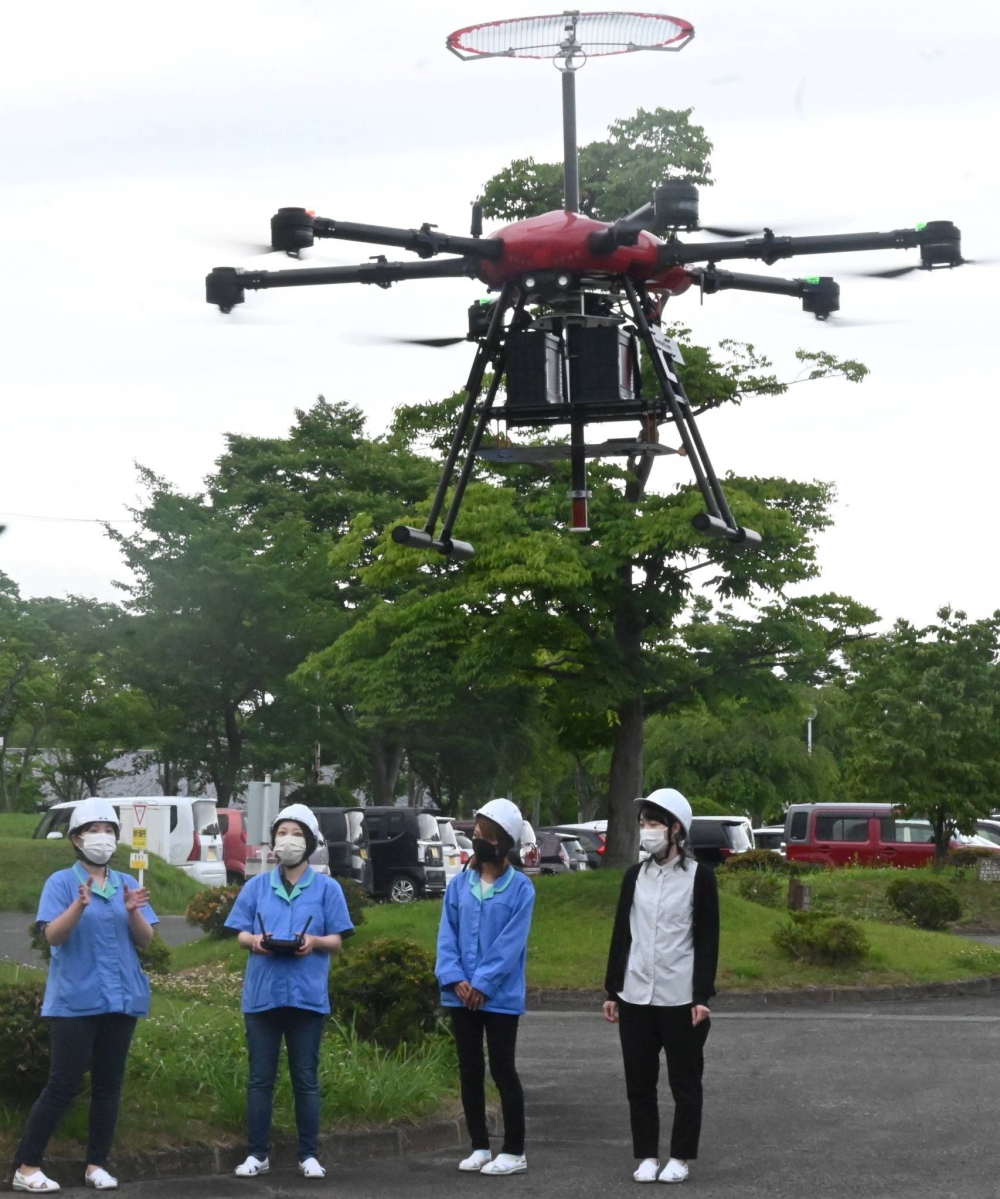With drones increasingly being used in Fukushima Prefecture for various purposes including agriculture and disaster prevention, a local firm has developed a system to utilize them to inspect wind turbines.
Fukushima Sangikyo, a company in the city of Fukushima that develops and produces communications equipment, succeeded in developing the system after repeated trial and error. It has since obtained a patent.
The firm plans to conduct final demonstration experiments with an aim to put it into practical use by the end of March next year.
Because wind turbines are typically set up at high elevations so that they are exposed to strong winds, they are susceptible to lightning strikes.
In order to protect wind turbines from lightning, down conductors are installed in blades and in the tower in order to provide a path for a current to reach the ground.
But grounding conductors — equivalent to grounding features provided with electrical appliances — get disconnected after wind turbines are hit by lightning a couple of times.
And another lightning strike under such circumstances will cause damage to the wind farm.
Fukushima Sangikyo’s wind turbine inspection system involves flying drones that can apply an electrical current through the blades to check if the down conductors are connected and working properly.
Inspection of wind turbines currently takes time and effort, as heavy machinery used for working at great heights usually needs to be delivered. Those with expertise working at such heights also need to be dispatched to the site.
The hope is that the use of drones will reduce the time needed for the work and will greatly cut the costs of inspection.
Fukushima Sangikyo, which is engaged in the maintenance and inspection of communication antennas, began focusing on drones around 2018 as a means to increase efficiency of work done at great heights.
But the development of the wind turbine system didn’t go smoothly at first, and workers endured a long process of trial and error.
They found that if a component of a drone that touches the blades is made of a hard material, they bump together and it becomes difficult to apply an electrical current.
An employee came up with the idea of using wire mesh — similar to what’s used for barbecue grates — to create the component. That idea allowed the team to develop a component that enables a drone to come in contact with a blade smoothly and apply an electric current stably.
“We will be happy if our development leads to the further spread of wind power generation,” said Shiori Kanno, 39, a member of the development team. “We hope to make more improvements, including reducing the weight (of the drone).”
Safety regulations under the electricity business law require wind power generation facilities to be inspected regularly to make sure they are safely operated.
Akira Mihoya, 68, chairman of Fukushima Reconstruction Wind Power, which plans to operate 46 wind turbines in the prefecture starting in 2025, welcomed the drone project.
“Technological innovations for maintenance work are expected to bring about improved power generation efficiency and cost cuts,” Mihoya said. “We are paying close attention to the future of this development project.”
Research and development of new technologies using drones is also being conducted in the prefecture at facilities including the Fukushima Robot Test Field, which is located in the city of Minamisoma and the town of Namie.
Kikuchi Seisakusho, a Tokyo-based robotics company that has its main factory in the village of Iitate in the prefecture, set up an in-house team to nurture drone operators.
The firm is also developing an app to match companies that provide agricultural work, including pesticide spraying and weed killing, using drones with users of the services.
Aizawa Concrete, a major concrete manufacturer based in Tomakomai, Hokkaido, that is building a production plant in Namie, plans to establish a hangar in the town in 2024 that will house drones that will be used to assess danger amid torrential rains or tsunami.
Source: The Japan Times


